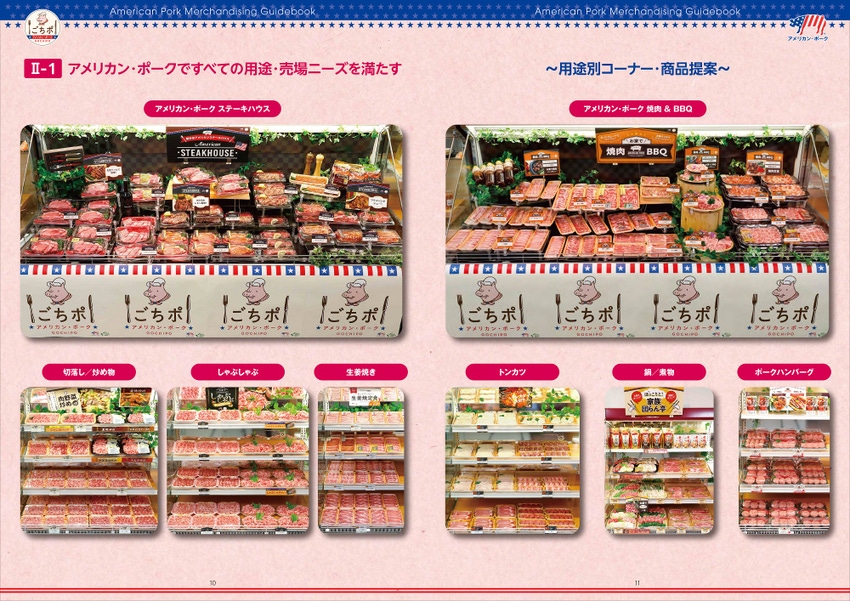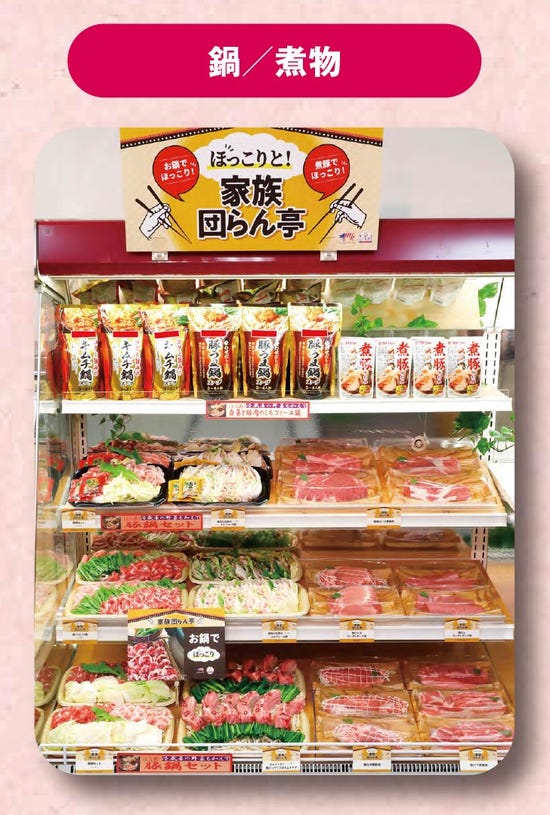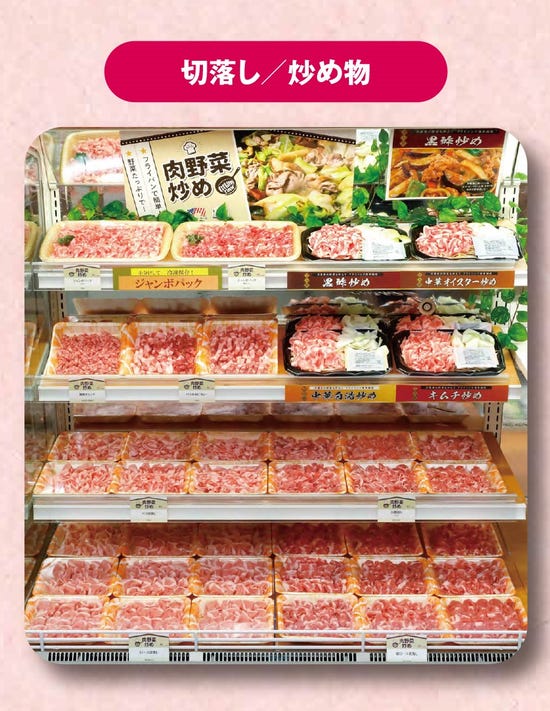Guidebook offers U.S. pork merchandising tips for Japanese retailers
The American Pork Merchandising Guidebook offers many meat case merchandising formats for Japanese retailers featuring U.S. pork.
January 13, 2021

The U.S. Meat Export Federation (USMEF) has unveiled a new guidebook aimed at further expanding U.S. pork's presence in Japanese supermarkets and other retail outlets. This is the latest in a collection of 17 U.S. red meat guidebooks developed by USMEF-Japan, but the first to focus specifically on retail meat case presentation of U.S. pork.
Provided to retailers featuring U.S. pork and the importers and distributors who supply them, the “American Pork Merchandising Guidebook” shows retail operators how to increase sales by improving their presentation of U.S. pork cuts. The guidebook, funded by the USDA Market Access Program, the Kentucky Soybean Association, the Indiana Soybean Alliance and the National Pork Board, includes lessons on proper cutting of U.S. pork. Packaging tips also offer ideas for enhancing the meat case appeal of U.S. pork and making it stand out among the wide range of protein choices available to Japanese shoppers.
Meat case presentation is always a critical method of communicating with consumers in Japan. But this is especially true now that there is a greater emphasis on preparing high-quality meals at home.

“The timing of this guidebook is beneficial because retail sales are growing as more consumers buy meat at the supermarket to prepare and eat at home,” said Takemichi Yamashoji, USMEF director in Japan. “We believe this positive retail trend will continue even as COVID-related restrictions are eased, as many consumers have discovered new ways to enjoy delicious meals at home. This guidebook provides retailers with tools that will encourage consumers visiting the meat department to choose U.S. pork over competitors' products.”
Filled with full-color photographs, charts, and information about individual U.S. pork cuts, the 44-page guidebook highlights eight separate meat case presentation ideas for U.S. pork. These presentation formats feature pork steak, yakiniku and barbecue, stir-fry (thinly sliced pork), shabu-shabu (hot pot), ginger pork, tonkatsu, stew and pork hamburger steak.

Initially, USMEF printed and distributed 3,000 copies of the “American Pork Merchandising Guidebook.” An electronic version is available from the USMEF-Japan website. The full lineup of U.S. red meat guidebooks issued by USMEF in Japan is available online.
"Guidebooks are an excellent means of putting detailed educational information into the hands of key industry partners, helping them grow their business through expanded sales of U.S. red meat," said Dan Halstrom, USMEF president and chief executive officer. "While the retail merchandising guidebook for U.S. pork is the latest example, this is a strategy that has proven very successful in Japan and helped solidify its position as the leading value market for U.S. red meat. The USMEF-Japan guidebooks have also served as an outstanding blueprint for other export markets."
Japan's retail sector is a critical destination for chilled U.S. pork, which mainly competes in this space with domestic and Canadian pork. In 2020, domestic pork accounted for about two-thirds of Japan's total chilled pork consumption. The United States was Japan's largest supplier of imported chilled pork, capturing a slightly larger share than Canada (Mexico also ships small volumes of chilled pork to Japan). While U.S. chilled pork is well established in Japan's national retail chains, USMEF and its industry partners are working to further diversify retail product offerings. The U.S. industry is also expanding the presence of U.S. chilled pork in Japan's regional supermarket chains by developing new accounts and introducing new promotional campaigns.
Processed pork products, many of which are made with U.S. ground seasoned pork, are also increasingly popular with Japan's retail consumers. Ground seasoned pork exports to Japan slumped in 2019 because U.S. suppliers faced a significantly higher tariff rate than their Canadian and European counterparts. But the tariff gap was erased in 2020 through implementation of the U.S.-Japan Trade Agreement, and U.S. exports staged a robust rebound at the reduced tariff rate (10% as of April 1, 2020, down from 20% prior to the Jan. 1, 2020 trade agreement implementation). Through November, the U.S. industry supplied 72.5% of Japan's ground seasoned pork imports, compared to 57% in 2019. The value of these imports reached $301 million, up 70% year over year.
"One of the key benefits of the U.S.-Japan Trade Agreement is that it created an opportunity for U.S. pork to reclaim market share in Japan's fiercely competitive retail sector," Halstrom said. "Whether supplying chilled pork cuts for the fresh meat case or raw material for processed products, a level tariff playing field is essential. In 2021, USMEF will be rolling out several promotions with both national and regional retailers in Japan to further capitalize on this opportunity."
Source: U.S. Meat Export Federation, which is solely responsible for the information provided, and wholly owns the information. Informa Business Media and all its subsidiaries are not responsible for any of the content contained in this information asset. The opinions of this writer are not necessarily those of Farm Progress/Informa.
About the Author(s)
You May Also Like



